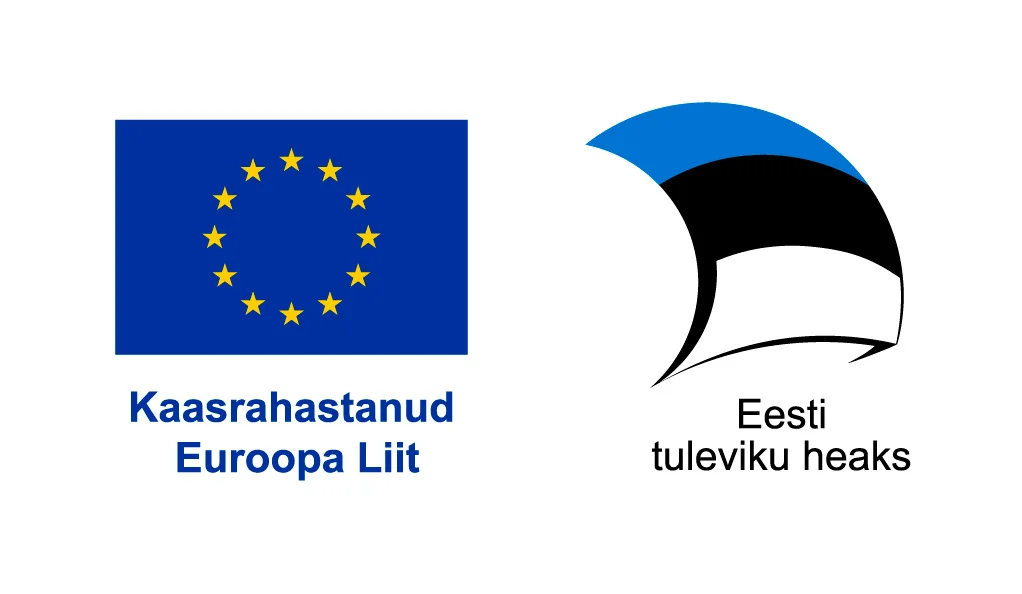Ida-Virumaa has the longest sandy beach in Estonia, but this is not the only reason why you should come here. The biggest value of local beaches is their uniqueness: without leaving Estonia, you can visit both Norway and Greece.
In Ida-Virumaa, you can spend a whole month of summer vacation, swimming and relaxing on the beach every day.
At the exit from the Tallinn highway, on the border with Ida-Viru County, you are attracted by the picturesque beach of Liimala. It reminds the residents of Harju County of Kloogarand beach with its thickets of wild rye, sticking out of the sand, and low coastal pines. Liimala beach inspires the organizers of painting camps and those who want to photograph incredible sunsets.

Architectural gains on the beach front
The creativity of nature on Liimala beach is complemented by the newly built Tulivee tourism centre with a Silver spoon-winning restaurant, a smuggled goods theme centre, a hotel, an open-air summer stage and an observation tower. The Estonian Association of the forest and woodworking industry declared the Tulivee complex a Wooden Building 2019.
The next most popular beach is Aa, due to its proximity, it is especially loved by residents of Kohtla-Järve. Aa is a sandy beach, but there are clusters of large boulders and smaller stones lying around. They are not as big and there are not as many of them as in Kääsmu, but they are also impressive.
If the beaches Liimala and Aa can be conveniently reached by car, the coast of Saka – that’s another story.
In order to descend from the steep bank at a height of more than 50 meters, the car can be parked at the Saka Manor and use the stairs that lead down to the beach. A little effort, and you will see a wonderful beach with white sand. The Saka estate considers it a local gem with good reason: „ … where the blue clay squeezed out of the cliff wall flows down to the strip of a beach; where countless streams and small waterfalls try to find their way to the sea, leaving strange clay tracks behind; where trees that have broken off from the high bank lie tangled with their roots intertwining like snakes…“.
Under the rocky cliff of Valaste a fascinating world of stones and outworn trees opens up. People come here not for beach joys, but to admire the highest waterfall in Estonia. And as part of the hiking trails of Valaste– Ontika pass along the sea, then why not take a plunge. As refreshing as sea water is the northern rain forest – views of the unusually lush broad-leaved forest and fern thickets open from both stairs of the trail and from the observation platform.

Tempt Toila beach to increase sense of recreation
After the wild beaches, a pleasant variety meets tourists in Toila. The beach is there with all the amenities: there is a cafe and a restaurant, open-air terraces where you can meet the sunset in the company of friends, play beach volleyball on the new grounds or have a workout in the open air.
On the evening of the last Saturday in August, fairy illumination lights up on Toila beach. The summer evening comes to life: teams start creating sculptures on which the illumination is lit one by one. The night of fairy lights in Ida-Virumaa is the oldest tradition in Toila, and it is difficult to say how many dozens of times it was celebrated.
The Music of Seven Cities Festival
The port of Toila, located at the mouth of the Pühajõgi River, is home to fishing boats, lifeboats and yachts; in summer, however, you will hear ear-pleasing music of the „7 Cities Music“ festival.
The beach and the harbor can be reached through the wonderfully varied Oru Park, so it is not only an enjoyable destination, but also a trip there. The peculiarity of the beach itself is the bulwarks made of flat beach stones, which turn into a sandy seabed. I know a person who moved from southern Estonia to Toila, who says that the beach here is completely mystical – as if he had ended up in Greece.
On Voka beach, however, you may feel like in Stone Age, at least this is the experience of the Jalonen family. „We went to a beach picnic and forgot all the cutlery. We built a stone barbecue and used bigger and flatter stones instead of plates. What a Flintstone’s [series from the Stone Age family – ed.] picnic!“ Kadri Jalonen, Ida-Viru Tourism Coordinator, recalls one summer day.

The stone theme continues on the Sillamäe beach, next to which a beach promenade with fountains, bridges, stairs, viewing platforms and various sports facilities is currently being built. The Udria beach between Sillamäe and Narva-Jõesuu, is worth visiting too. Udria is widely known for its significant Estonian-Finnish landing of troops in the War of Independence, but it also has a savage nature: a primeval valley, a sandstone bank and a powerful rock planting that stretches for almost half a kilometer of coastline.

The feel-good Narva-Jõesuu
After having climbed over plenty of stones of Udria, go to Narva-jõesuu, where everyone can relax to the fullest on the 10-km-long beach covered with fine sand.
My sun-worshipper friend from Tartu considers Narva-Jõesuu beach to be the only one in Estonia where a smooth brown tan is guaranteed without having to fight for a place in the sun. There is everything you need for a beach holiday: lifeguards and beach cafes, a surf club and a beach volleyball court, benches and toilets, a promenade and parks.
If Narva-Jõesuu is one of the longest sea beaches in Estonia, then on the Northern coast of lake Peipus. There is the longest sandy beach in the country. If you like to swim in warm water, on the velvety sand and enjoy walks, go there.
The northern shore of Lake Peipus is a popular holiday destination unique for its natural beauty.
Tourist guides report that the 30-kilometer North coast of lake Peipus stretches from Kauksi to Vasknarva. If you come from Tartu, the first stop can be made in Rannapungerja. Although the beach there is sometimes overgrown with reeds, it has its own unique attraction in the form of a lighthouse over 70 years old.
From the observation deck built at the foot of the lighthouse, you can enjoy a beautiful view of the lake. The river that flows into the lake and the entire shore.
Once the Rannapungerja river was famous for timber rafting, which was used for timber obtained in the winter in the deep suramenyas. Now it is rather a place of rest, where you can simultaneously be on the shore of a lake and a river.
Rannapungerja lighthouse 1936, lake Peipsi, Estonia
For more than 10 years, the lighthouse festival has been held at the mouth of the Rannapungerja river. Somehow, the festival has always been lucky with the weather. Whether the audience is hot, or the music is so good that it does not allow the weather to frown. For a native of Ida-Virumaa, actor Guido Kangur, concerts held in the middle of summer are a bow to their small homeland. The program is full of mood rhythms in the style of jazz, pop, Blues and rock.
The most famous recreation area on the coast, Kauksi, is home to the largest recreation area managed by the state forest center (RMK). And RMK has built a tent area in a pine forest in the dunes in Raadna, Uusküla and Karjamaa.
Those who do not intend to limit themselves to lake Peipus can turn their gaze towards Kurtna lakes located in the southern part of the county. Thanks to a sandy day and a good approach to the water, more than ten lakes out of 40 are perfect for beach holidays. You can set up a tent near lake Konsu, the largest in this lake district. The most popular among tourists are Liivjärv, Rääkjärv, Nõmmjärv and Martiska, widely used with their arranged bonfire grounds.
There is no release from tourists and areas for bonfires located near Jõuga lakes. One of the four lakes – Pesujärv – is a great place for swimming, with a boardwalk leading to the lake, and you can dive into the water from a special bridge. Another popular place for swimming is located on the western border of Ida-Viru County, in Uljaste. This fish-rich lake not only has a bonfire area, but also features a hiking trail.

Extreme lovers vow to enjoy
Those who are looking for more than just a blue lake surface on vacation can include the industrial landscape of Aidu in their itinerary. After the quarry was closed, roads and mining sites filled with water. And so, it turned out that in the middle of the stone desert a beautiful water world formed, painted in light blue and green tones. We are talking about the so-called Ida-Viru fjords.
In contrast to lake Peipus, where you have to walk a bit before you may swim. To sink to the bottom in Aidu, you need to be a diver. But don’t look for a classic beach in Aida. In some flat places, you can get into the water without using a ladder. I used a ladder and a pontoon built by the Adrenaator Grupp. Which are located one kilometer from the Estonian Mining Museum.
It is a very unusual feeling to swim in a place where powerful mining combines once rumbled. Former Kohtla mine lies, while on the other – the beginning of Aidu quarry. A similar feeling occurs in Joaoru beach in Narva. Where you may enjoy the opeing views of the town, and the fortress of Ivangorod.

SIRLE SOMMER-KALDA
Journalist for ’Põhjarannik’ newspaper
„The story is written with the support of the EU Regional Development Fund“








